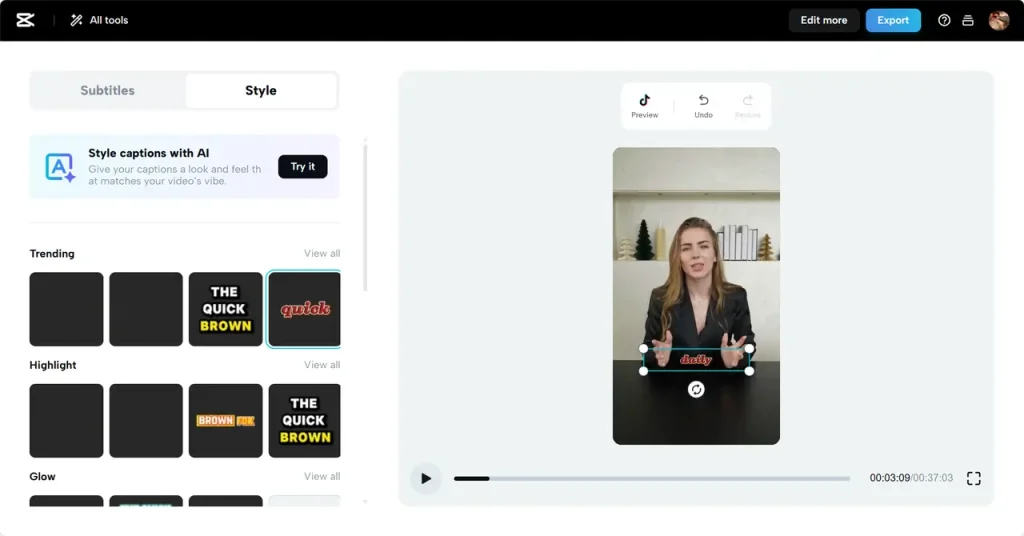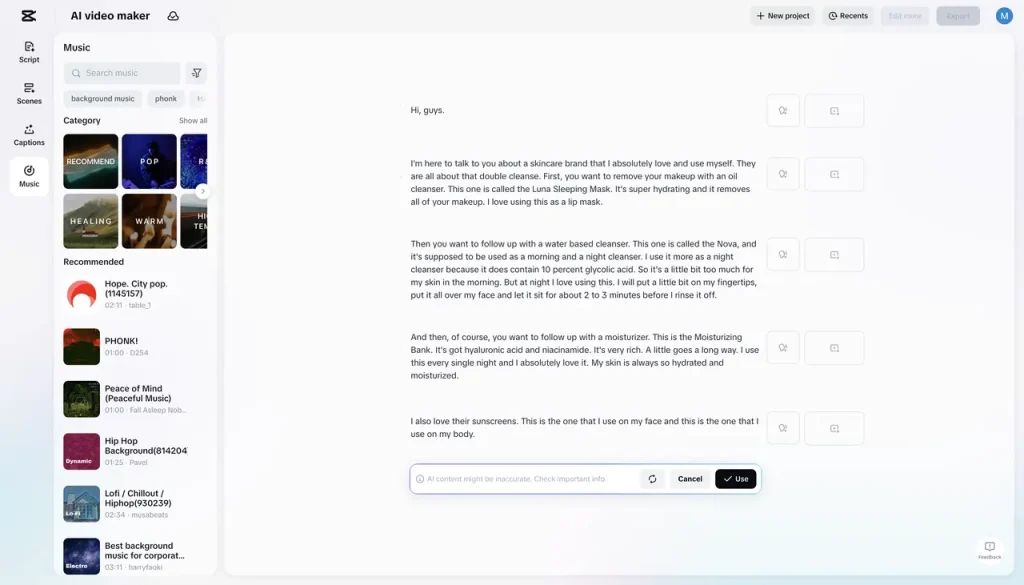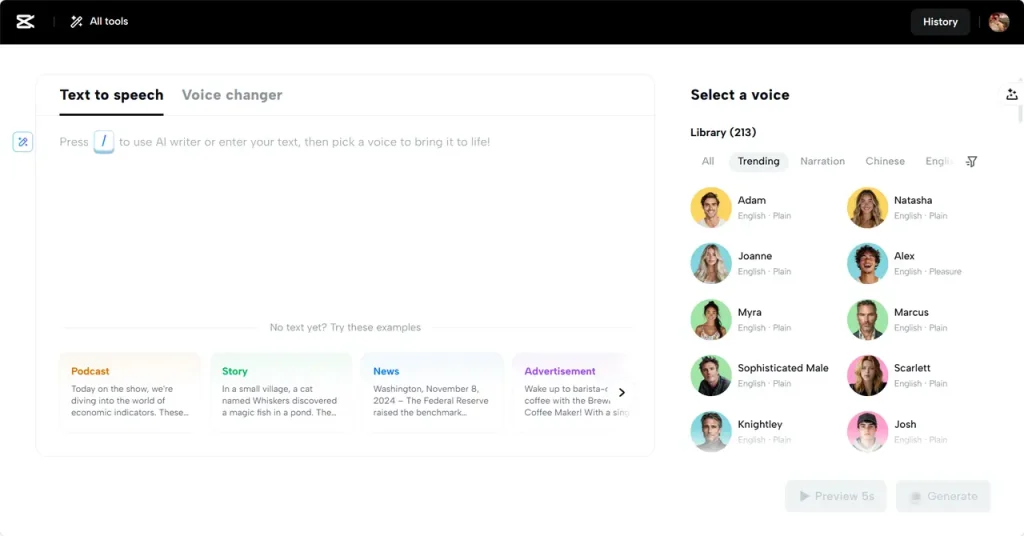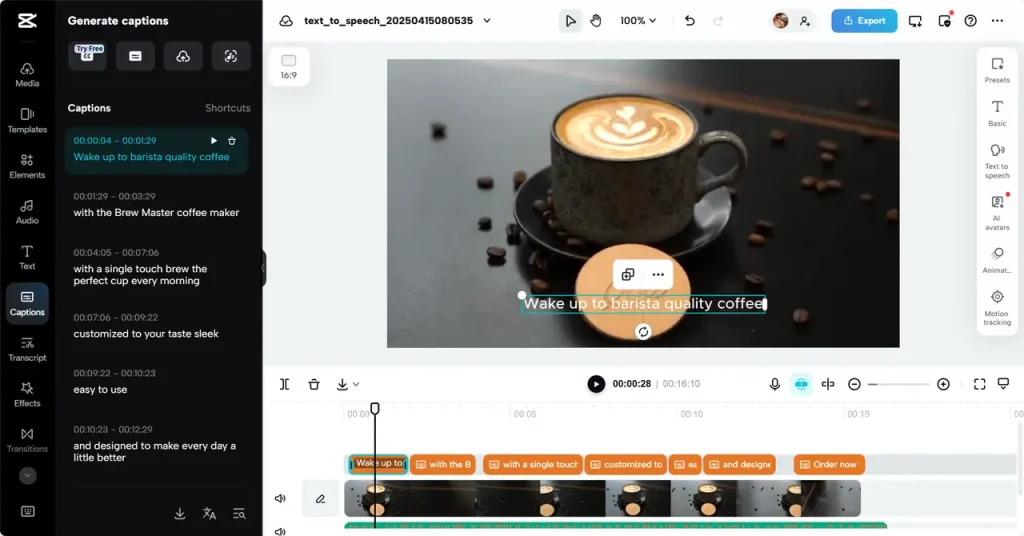
How AI Tools Make Scriptwriting and Voiceovers Easier – But Not Optional
Have you ever watched a video that just didn’t feel right? Maybe the voiceover sounded robotic, the script was awkward, or the story simply didn’t flow.
In today’s world of fast reels and viral shorts, a natural script and engaging voiceover are the difference between a forgettable scroll and a viral hit. The good news? Even beginners can create professional-quality videos using free, easy tools like CapCut Web – no expensive software or studio needed.
Trending Now!!:
But to truly stand out, you need more than just eye-catching visuals. You need a script that resonates and a voiceover that brings your story to life. Let’s break down how to achieve this using both AI video-making tools and text to speech free tools-without mixing up their roles.

The basics: what makes a script and voiceover work?
Writing for video is different from writing for reading. Spoken language is more conversational, relies on rhythm, and needs to be clear and engaging. Your script is the backbone of your video, guiding both the visuals and the voiceover.
A great voiceover isn’t just about reading words- it’s about delivering your message with the right emotion, pace, and clarity. Whether you use your own voice or an AI-generated one, the quality of your script and your choices for tone and timing are crucial.
Best practices for scriptwriting with free tools
Keep it conversational and clear
Write your script as though you were speaking to a friend. Steer clear of lengthy phrases and complex vocabulary.
When spoken aloud, short, punchy lines are more natural and easier to follow. Using CapCut Web’s script generator, you can just input your subject and let AI assist you in arranging your random thoughts into a logical flow.
Focus on timing and pacing
About 150–160 words per minute is a reasonable goal. Read your script aloud to see whether it sounds hurried or too slow. Your friends are pauses; they allow your voiceover to sound more natural and provide listeners time to absorb information.
Structure visually for easy reading
Divide your script into parts using clear headings or bullet points. If you’re using an AI voiceover or giving your script to someone else to record, this is particularly useful. Visual structure improves the identification of areas needing trimming, improvement, or clarification as well.
Tailor your message to your audience
Consider who will view your video. Are they professionals or beginners? Having this knowledge will help you to quickly change your language, tone, and delivery to fit their needs and preferences. This little but powerful technique will help your material to be more personal and interesting.
Test and refine by reading aloud
Read your script out loud or run it through a text-to-speech tool before you finish it. This catches sentences that don’t flow well, tongue twisters, or strange phrases. Edit until it sounds natural and smooth.

Creating Videos with AI Video Makers
CapCut Web’s AI video maker offers a streamlined process:
- Script Generation: You can use built-in AI features to generate a script based on your topic.
- Direct Voiceover Creation: Once your script is ready, simply select a voice within the video maker to generate a natural-sounding voiceover-no need to export your script to a separate TTS tool.
- Automatic Video Production: The AI can assemble visuals, music, and narration into a complete video, ensuring consistency and saving you time.
Bonus: CapCut Web’s AI caption generation tool instantly adds accurate subtitles, making your videos more accessible and saving you hours of manual work.

Using TTS Tools for Standalone Audio
If you only need an audio file or want to create voiceovers for other projects, TTS tools are your go-to:
- Script Input: You can write or generate your script directly in the TTS tool’s input box (often with the help of AI writing features).
- Flexible Voice Options: Adjust speed, pitch, and emotion to match your project’s needs.
- Integrated Captions: Many TTS tools, like CapCut Web, allow you to generate captions from your script, making your content even more accessible.
TTS tools are perfect for creating narration for tutorials, podcasts, or explainer videos-especially if you’re on a budget or want to avoid recording your own voice.
Making your content accessible and engaging
Reaching a larger audience depends on captions and subtitles, which are more than just an afterthought. Supporting several languages and styles, CapCut Web’s AI caption generator makes it simple to include correct, adjustable captions in your videos. Viewers who are deaf or hard of hearing, as well as those who choose to watch videos without sound, will find this particularly useful.

Final thoughts: your story, your voice
Great videos start with a great script and a voiceover that feels real and relatable. With CapCut Web’s free tools, you don’t need to be a tech expert or spend a fortune to bring your ideas to life. Don’t underestimate the impact of captions to help everyone access your content; concentrate on writing scripts that sound natural and use AI-powered voiceovers to inject character.
Embracing these best practices and using the newest AI capabilities will help you to produce videos that not only look and sound great but also really connect with your audience members.
Your story deserves to be heard, so let CapCut Web help you tell it, one word at a time.
